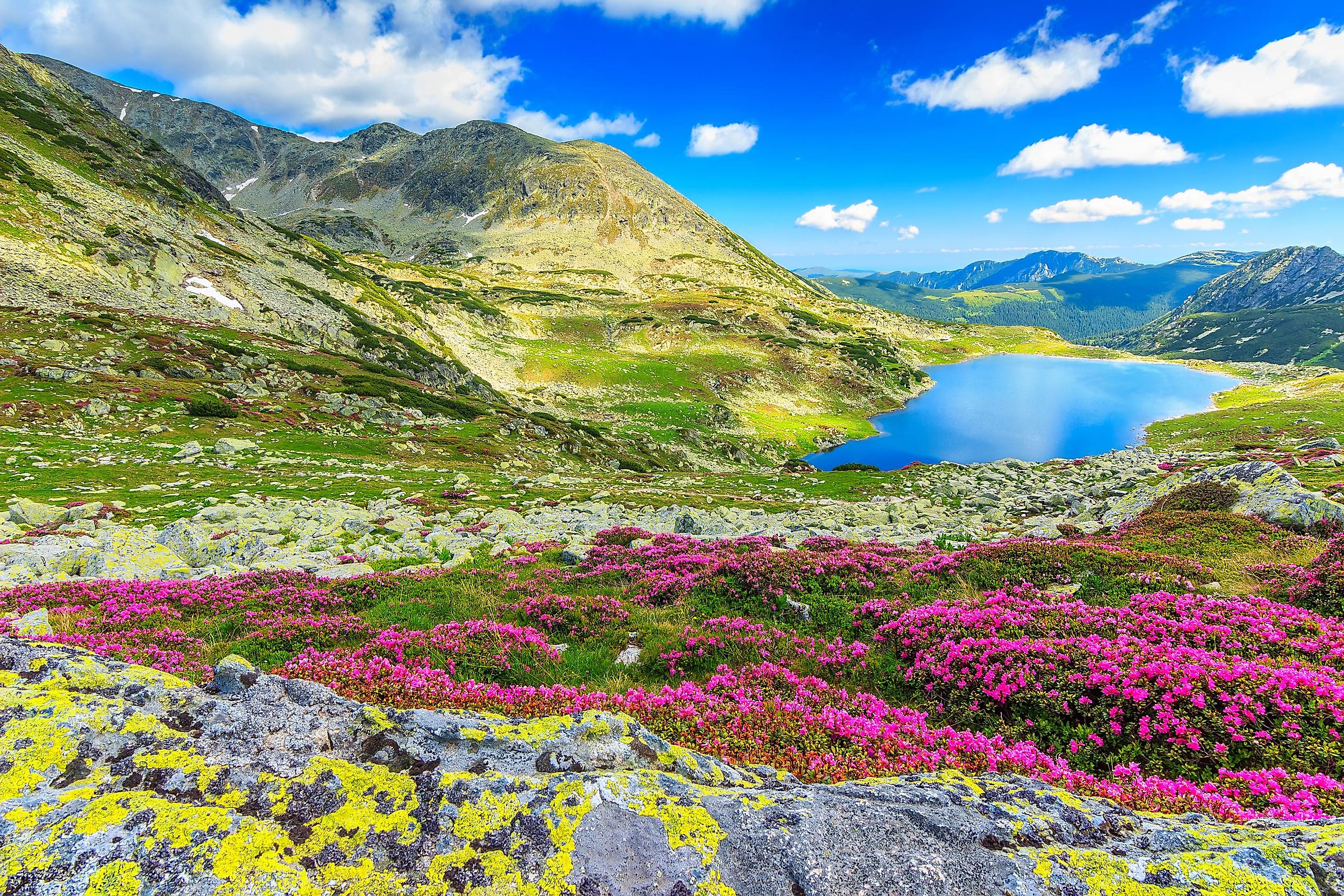
Carpathian Mountains
The Carpathian Mountains are a chain of geologically young mountains that stretches across parts of Central and Eastern Europe. This arc-shaped mountain range is Europe’s third longest mountain range after the Urals and the Scandinavian Mountain ranges.
The Carpathian Mountains stretch for about 1,700 km from the extreme eastern part of the Czech Republic in the northwest and then moves in the southward direction through the countries of Slovakia, Poland, Hungary, Ukraine, Romania, and Serbia. About 50% of the Carpathian Mountains are located within the borders of Romania.
Geography

The Carpathian Mountains cover a total area of about 200,000 km2 and the width of the mountain chain varies between 12 and 500 km. Situated on the boundary between Slovakia and Poland is the Tatra Mountain Range, the highest range in the Carpathian Mountains. The highest peak in the Carpathians is Gerlachovský štít which is located in the northern part of Slovakia and rises to an elevation of 2,655 m.
The Carpathian mountain range can be further divided into three broad sections: The Western, Eastern, and Southern Carpathians.
The Western Carpathians
These mountain ranges form the western portion of the Carpathian Mountains and extend from the Low Beskids mountain range which is located on the boundary between Slovakia and Poland, to the countries of the Czech Republic and Austria. In the southern flank, the North Hungarian Mountains extend over North Hungary. The Western Carpathians are separated from the Eastern Alps by the Braunsberg Hills and the Vienna Basin. The mountains are bounded in the east and northeast by the East Slovak and the Sandomierz Basins, which then rise as the Eastern Carpathians. Gerlachovský štít, the highest peak in the Carpathians, is a part of the Western Carpathians. Some of the other notable mountain peaks include Rysy (Poland), Kékes (Hungary), and Lysá Hora (Czech Republic). The significant cities that are situated near the Western Carpathians are Kraków (Poland) and Bratislava (Slovakia).
The Eastern Carpathians

These mountain ranges stretch across the countries of Romania and Ukraine, the southeastern part of Poland, and the eastern part of Slovakia. The Eastern Carpathians are further divided into two large divisions, namely the Outer Eastern Carpathians and the Inner Eastern Carpathians. The significant cities that are situated in the Eastern Carpathians are Cluj-Napoca (Romania) and Chernivtsi (Ukraine). Located in the Presov Region in the northeastern part of Slovakia is the East Carpathians Protected Landscape Area. Established in 1977, this region occupies an area of 253.07 km2, is dominated by beech forests and is mainly inhabited by several threatened species like bears, gray wolves, lynx, otters, etc.
The Southern Carpathians
These mountain ranges stretch across Serbia and the southern part of Romania and are positioned between the Balkan Mountain range in the south; the Cerna and Timis rivers in the west and the Prahova river in the east. After the Tatra Mountain range, the Southern Carpathians are the second-highest mountain group in the Carpathians with an average elevation of more than 2,500 m. Though these mountains are relatively much smaller than the Alps mountain range, the Southern Carpathians are classified as parts that have an alpine landscape. Located in the Fagaras Mountains in the Southern Carpathians, the Moldoveanu Peak is Romania’s highest point, which rises to an elevation of 2,544 m. Some of the other notable peaks in the Southern Carpathians include the Negoiu, Parângu Mare, Peleaga, and the Omu mountain peaks. The Southern Carpathians also contain the largest unfragmented forest areas in Europe.
The Carpathian Mountains and its foothills are a source of thermal and mineral waters, one-third of which belongs to Romania. The Danube River separates the Carpathian Mountain ranges from the Alps Mountain ranges. Several plains surround the Carpathians including the Galician Plain in the northeast; the Pannonian Plain in the southwest and the Lower Danubian Plain in the south. The Carpathians experience a relatively cool and humid climate.
Wildlife

The Carpathian Mountain range comprises more than one-third of all the floral species in Europe and is rich in endemic and rare plant species. The European yew, mountain pine, and stone pine are some of the rare plants that are found here. It has been estimated that about 250,000 hectares of virgin forest in Europe are found in Romania, which is the second-largest untouched forest in the world after Russia. The Carpathians also support some of the highest populations of brown bears (Ursus arctos), Tatra chamois (Rupicapra rupicapra tatrica), Eurasian lynx (Lynx lynx), wolves (Canis lupus), European wildcats (Felis silvestris), and the European bison (Bison bonasus).











